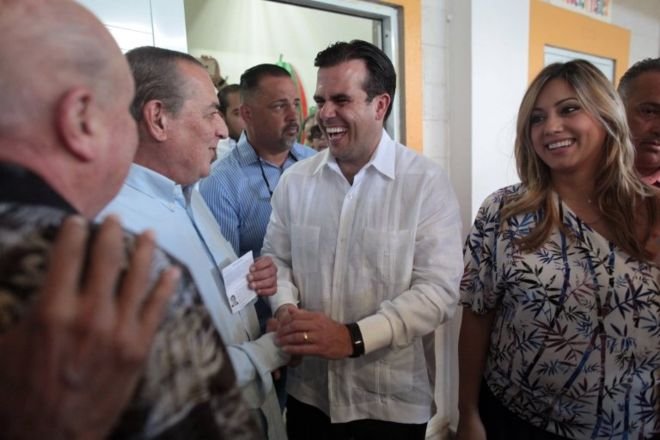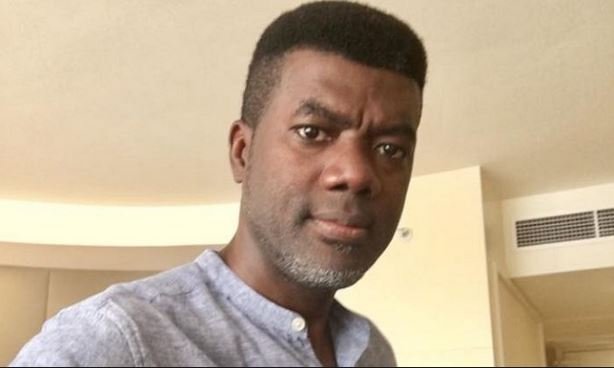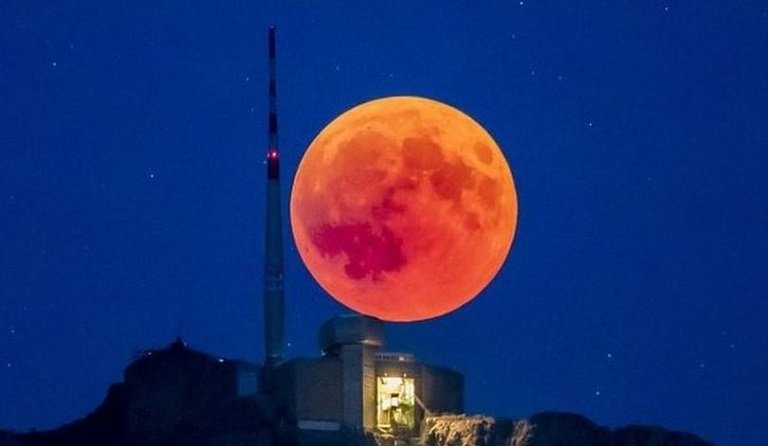News
Puerto Rico votes in referendum to become US state


Puerto Rico Governor Ricardo Rossello (C) and his wife Beatriz Rossello (R) greet voters
REUTERS
The United States territory of Puerto Rico has voted to ask Congress to make it America’s 51st state.
More than 97% of voters favoured attempting to join the US over becoming independent or remaining a self-governing territory.
However, just 23% of the electorate turned up to cast their ballot amid an opposition boycott, and its results are non-binding.
The final decision is also not in their hands but up to Congress.
It did not act on the previous referendum’s result, which was the first time ever a majority of valid votes were cast for statehood in the former Spanish colony.
Close to 30% of all voters in that election cast blank or invalid ballots, a situation which generated doubts about the vote’s political legitimacy.
The 2017 referendum was called by the government of the island against a background of economic crisis, which some attribute at least partially to Puerto Rico’s unusual legal status, halfway between independence and full statehood.
Opponents of the vote back keeping the status quo.
Why was a new referendum called?
The current governor of Puerto Rico, Ricardo (“Ricky”) Rossello, who was sworn in on 2 January, campaigned on a promise of seeking full statehood for the island, which he says is needed to solve the current economic recession affecting Puerto Rico, the worst in decades.
The economic crisis has led to large government deficits, a severe cutback in public services, an increase in local utility rates and sales taxes as well as ongoing protests against local and federal authorities, which are expected to continue.
How could becoming a US state help Puerto Rico solve its financial problems?
The island’s government says it cannot meet all of its $72bn (£56bn) debt obligations.
Statehood advocates point out that while US laws have allowed other heavily indebted US local governments to seek bankruptcy protection, Puerto Rico has fewer means of legal defence because it is not a US state.
Proponents of statehood also argue that if it became fully integrated into the Union, Puerto Rico would receive more federal spending to reactivate the economy, which currently has an unemployment rate close to 12%.
How would everyday life change if the island became a US state?
All Puerto Ricans are already US citizens, with unrestricted rights to settle on the US mainland.
But if they obtained statehood, Puerto Ricans living on the island would for the first time be able to vote in US presidential elections, and would elect lawmakers with the right to vote in the US Congress.
Puerto Ricans would also become eligible for the full welfare benefits currently available to US citizens living in the 50 states.
On the other hand, Puerto Ricans on the island would have to start paying full federal income taxes. They currently do not pay US income taxes on earnings obtained on the island.
What happens next?
Few expect current US lawmakers to be very enthusiastic about eventual statehood for Puerto Rico.
One big reason is that the Republican-controlled US Congress might be wary of a move that could erode their majority in both houses by allowing the Democratic-leaning Puerto Rican electorate to choose two new senators and several members of the House of Representatives.
Also, granting Puerto Rico statehood would lead to greater federal spending on the island, which could prove unpopular at a time when the Republican majority in Congress is calling for sweeping spending cuts.
Puerto Rico would be the poorest state in the Union, with many of its residents becoming eligible for greater federal welfare payments.







